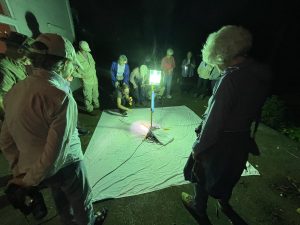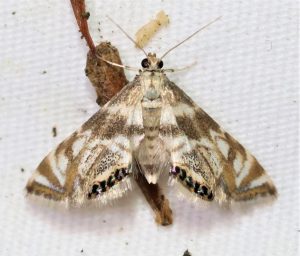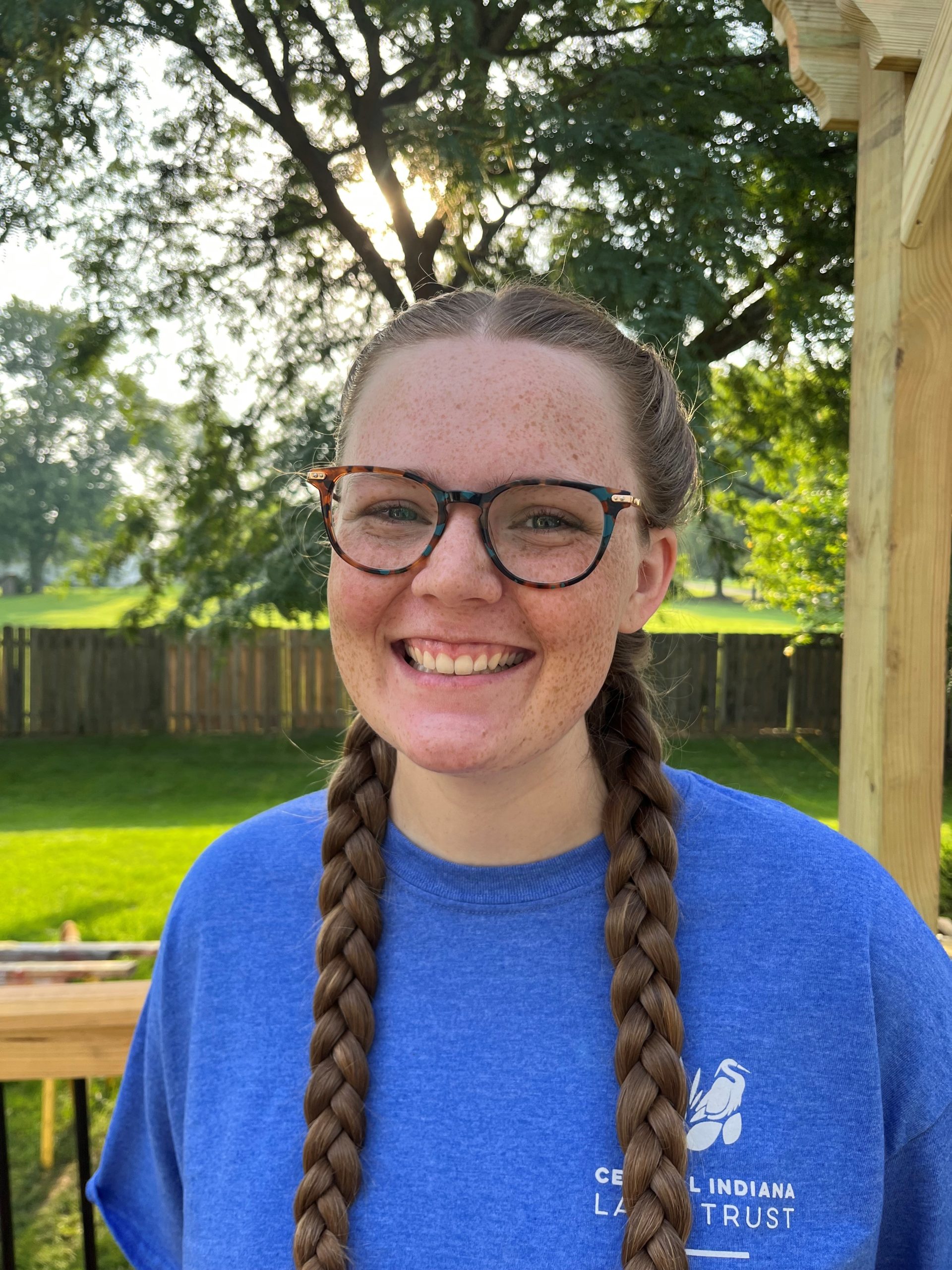This month’s Golden Hour was led by Jeanette Jaskula, the President of Friends of the Sands and a moth enthusiast! What’s so special about Jeanette’s passion for moths is that it goes against the grain of common wisdom. People sometimes think of moths as lesser, believing moths are dull in color, gross, and (creepily) only out at night. You’ll also always hear the butterfly glorified over the moth. But Jeanette introduced the joy of moths, reminding attendees of moths’ stunning colors, patterns, and important roles in our ecosystem.
Jeanette offered some food for thought: Nobody ever asks why someone gets into butterflies, but everyone wants to know why someone gets into moths. Did you know that all butterflies are moths, but not all moths are butterflies? For every butterfly, there are nine to ten moths; moths have awesome species diversity!
They also have an amazing ability to blend in. Some moths have false eyes, while others mimic plants by placing parts of those plants onto themselves. Others have bright colors to tell predator species of their toxicity. Sometimes this is the truth, but sometimes it is just a good tactic.

Moths are very closely tied to native plants and act as pollinators and members of the food web. The best way to “grow” moths is to let native weeds grow and to plant native plants. This especially includes “powerhouse plants” like common evening primrose, goldenrod, ragweed, mint, and horseweed. Each of these plants attracts a vast number of moth species.
When trying to find moths, you can use sheet lighting (like pictured here) or bait trees. Baiting trees is a nicer way to attract moths because you’re gifting them with a meal, making it worth the moths’ time as well as yours. An easy but wonderful bait concoction to spread on the trunk of a tree is a mixture of brown sugar, beer, and rotten bananas (or any rotten fruit).

One exciting find of the night was a Canadian petrophila. According to Jeanette, adult females need to enter the water to lay eggs, and the caterpillar is aquatic! They live in the nearby White River, feeding on algae scraped from rocks. The rows of dots on the hindwing of an adult are hypothesized to mimic the eyes of jumping spiders.
To identify moths like Jeanette does, books are an excellent place to start. Websites like iNaturalist are also handy to use to post your pictures and location so others interested in mothing can see your find. You can also contribute to Indiana Nature’s project, the Great American Indiana Nature Lepidoptera Project. They have a Facebook group called IN Nature. In the group, you can upload your sightings with the date of find and county name. This will also give you a great community of fellow moth enthusiasts!
Thank you, Jeanette, for sharing your love of moths with us and everyone who came to Oliver’s Woods for this special program!

Bridget Walls
Communications and Outreach Intern